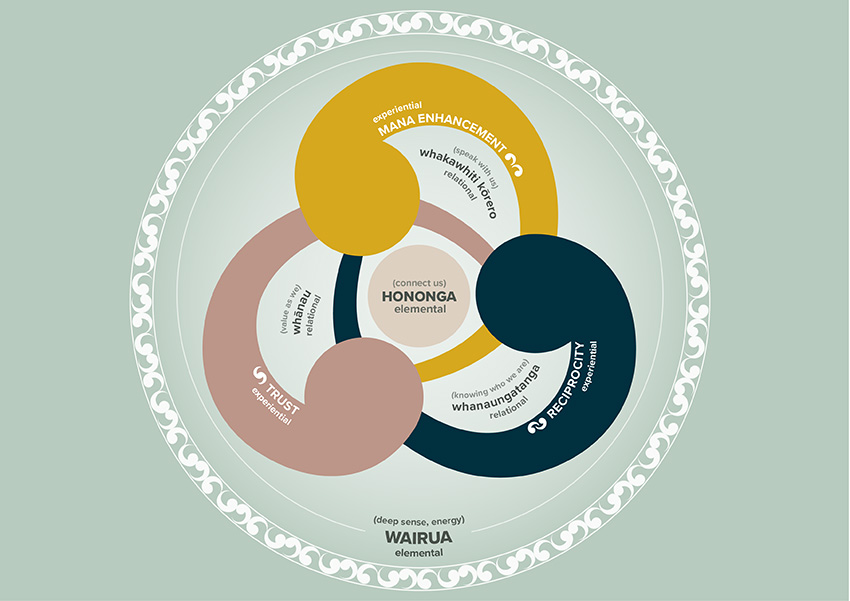‘The wairua first brings you together’: Māori experiences of meaningful connection in neurorehabilitation
Māori experiences of meaningful connection in neurorehabilitation
This study sought to explore the perspectives of Māori brain injury survivors, and their whānau (wider family and community), to develop more culturally informed understandings of what matters most for Māori in the development and experience of therapeutic connection.

Approach and concept
A bicultural approach underpinned by principles of Kaupapa Māori Research was used. Whānau views and experiences were gathered through wānanga (focus groups). These perspectives were analysed drawing on Māori methods of noho puku (self-reflection), whanaungatanga (relational linkage) and kaitiakitanga (guardianship).
The phrase ‘therapeutic connection’ did not resonate; instead, people spoke of meaningful connections. For rehabilitation encounters to be meaningful, three layers of connection were acknowledged. The elemental layer features wairua (spirit) and hononga (connection) which both underpinned and surrounded interactions. The relational layer reflects the importance of whānau identity and collectivism, of being valued, known, and interactively spoken with. Finally, the experiential layer consists of relational aspects important within the experience: relationships of reciprocity that are mana-enhancing and grounded in trust. These layers are interwoven, and together serve as a framework for meaningful connections.
Meaningful connections in neurorehabilitation are underpinned by wairua and hononga; are multi-layered; are enabled through interactions with people, practice, process and place; are inclusive of whānau and resonate with Māori worldviews. The primacy of wairua and whānau within an interconnected view of health, challenges individualistic notions inherent in western health models and deepens existing understandings of meaningful connections in neurorehabilitation which can guide future rehabilitation research, teaching and practice.
Three wānanga were held with 16 people – 5 brain injury survivors and 11 whānau members. The phrase ‘therapeutic connection’ did not resonate; instead, people spoke of meaningful connections. For rehabilitation encounters to be meaningful, three layers of connection were acknowledged. The elemental layer features wairua (spirit) and hononga (connection) which both underpinned and surrounded interactions. The relational layer reflects the importance of whānau identity and collectivism, of being valued, known, and interactively spoken with. Finally, the experiential layer consists of relational aspects important within the experience: relationships of reciprocity that are mana-enhancing and grounded in trust. These layers are interwoven, and together serve as a framework for meaningful connections.
Further details
Publications
- Wilson, B., Bright, F., Cummins, C., Elder, H., & Kayes, N. (2021). ‘The wairua first brings you together’: Māori experiences of meaningful connection in neurorehabilitation. Brain Impairment, 1-15. doi:10.1017/BrImp.2021.29
Project details
Funder:
Brain Research New Zealand Centre of Research Excellence (BRNZ CoRE) Grant (Grant number: 11852)
Principal investigator:
Bobbie-Jo Wilson
Research team:
Felicity Bright, Christine Cummins, Hinemoa Elder, Nicola Kayes
Key Collaborators:
Participants from 3 communities: members of an urban community marae in Tāmaki Makaurau; clients from a rural medical centre in Te Tairawhiti; whānau from a remote coastal whānau home in Te Tairawhiti
Contact:
bjwilson@aut.ac.nz
Status:
Ongoing